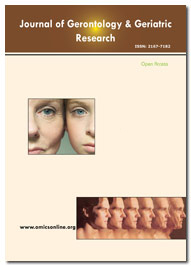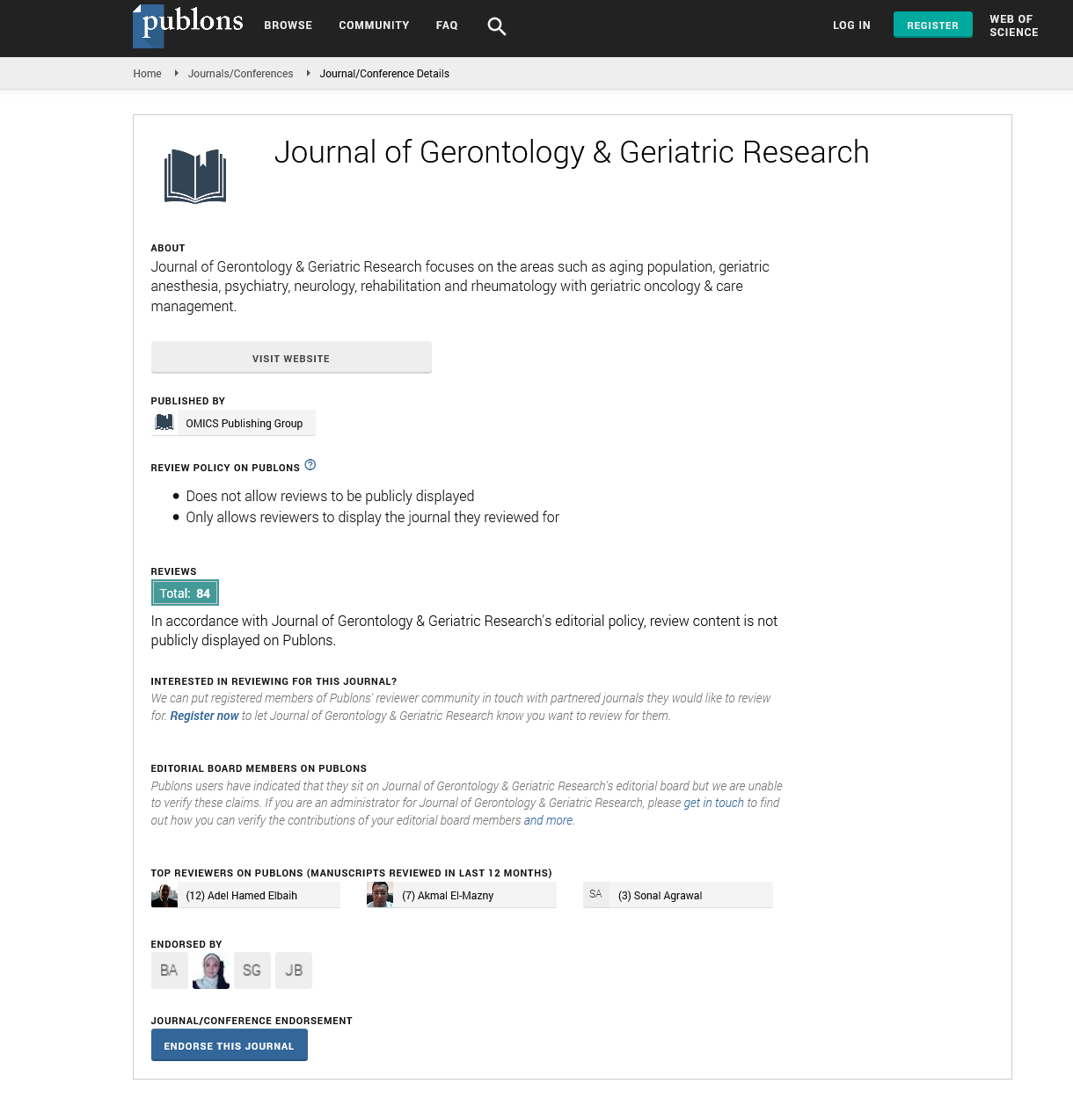Indexed In
- Open J Gate
- Genamics JournalSeek
- SafetyLit
- RefSeek
- Hamdard University
- EBSCO A-Z
- OCLC- WorldCat
- Publons
- Geneva Foundation for Medical Education and Research
- Euro Pub
- Google Scholar
Useful Links
Share This Page
Journal Flyer

Open Access Journals
- Agri and Aquaculture
- Biochemistry
- Bioinformatics & Systems Biology
- Business & Management
- Chemistry
- Clinical Sciences
- Engineering
- Food & Nutrition
- General Science
- Genetics & Molecular Biology
- Immunology & Microbiology
- Medical Sciences
- Neuroscience & Psychology
- Nursing & Health Care
- Pharmaceutical Sciences
Abstract
Structural Validity and Reliability of the Dutch Older Patient in Acute Care Survey (OPACS), Measuring Nurses Attitude towards Older Patients
Jeroen Dikken, Jita G Hoogerduijn, Sharon Klaassen and Marieke J Schuurmans
Background: In clinical practice, nurses’ attitudes regarding older patients are important in relation to quality of care. The Older People in Acute Care Survey (OPACS) is an instrument measuring hospital nurses attitudes regarding older patients and validated in Australia and the USA. The OPACS is translated in Dutch language and content validity of this translation is previously assessed, presenting questionable results. Measurement instruments, however, cannot be “validated” based on content validity evidence alone. Judgmental evidence and statistical analysis should be combined to fully evaluate content domain definition and representation and guide further development.
Objective: Assess structural validity and reliability to fully evaluate the OPACS for use in the Netherlands, complementing previous conducted content validity results.
Design: Cross-sectional.
Setting: Three general hospitals in the Netherlands.
Participants: 201 registered nurses.
Methods: Confirmatory factor analysis was used to assess the structural validity. Reliability was assessed with Cronbach’s alpha.
Results: OPACS Section A (measuring practice experiences) demonstrated to have acceptable structural validity- and good reliability outcomes after exclusion of two items (model fit: x² [df=537]=8475.40, p <0.001, CFI=0.96, TLI=0.96, RMSEA=0.21; Cronbach’s alpha=0.82). Section B (measuring general opinion) demonstrated to have inadequate structural validity outcomes (model fit: x² [df=1127]=9200.29, p<0.001, CFI=0.68, TLI=0.67, RMSEA=0.15). None of the items contributed significant to the factor and therefore no further analysis could be performed (range p(>|z|)= 0.551 -0 .788).
Conclusion: Even though structural validity for section A was acceptable, content validity scores of a majority of items in this subscale were low, resulting in questionable use of this subscale for the Dutch context. The findings of this study, in relation to the earlier findings regarding content validity, justify the conclusion that use of the Dutch OPACS in clinical practice and research is not recommended. Given these findings, future research should pursue the development or (cross-cultural) validation of other instruments measuring hospital nurses attitudes towards older patients for the Dutch cultural context. Furthermore, this study demonstrated the influence of cultural differences on measurement instruments and the need for rigorous research before using a measurement instrument in a new culture or context.

